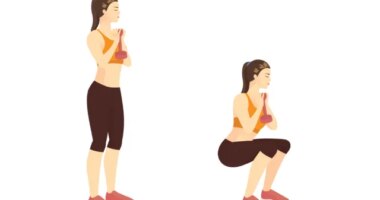Wellness
oi-Dr Nishant Shukla
on February 6, 2022
Chronic lung parenchymal disease or chronic obstructive pulmonary disease (COPD) is a chronic inflammation of lung tissue characterised by shortness of breath, breathlessness, coughing, wheezing sounds, and mucus production and discharge. This bears the potential risk of developing heart disease, cancer, and other health issues. The disease is a sequel to bronchitis and emphysema.
What Is COPD?
Chronic obstructive pulmonary disease is a chronic inflammation of functional units of the lungs i.e. alveoli and the bronchial tubes. This may eventually lead to the destruction of the airways. The reduction in air passage is progressive in nature if not properly managed. The medical condition is manageable but the patient may require long term management to achieve symptomatic relief, quality of life and arrest of sequel and complications.
In the initial stage of the disease, the patient often has very few harassing symptoms and the lung capacity (measures as forced expiratory volume) is also maintained. When the disease progresses to moderate levels the symptoms increase; shortness of breath and coughing increase but the patient can perform normal and routine activities.
In this stage lung capacity and FEV reduce but can be maintained. In the third stage of the disease problem worsens further, the lung capacity further reduces and forced expiratory volume reduces considerably. Patients find it difficult in performing normal and routine activities. Coughing is frequent, breathlessness or shortness of breath occurs even with a minimal exception. This stage is palliative and treatment can merely reduce symptoms. In the last stage of the disease FEV reduces further, the patient finds it extremely difficult to perform normal functions and routines.
What Causes COPD?
COPD is caused by smoking, fumes, bronchial asthma and obstruction of airways leads to COPD. The factors that trigger the problem were exposure to smoke (active or passive), asthma, and exposure to dust, chemicals, and fumes. It has been observed that rare and uncommon genetic disorder of alpha -1-antitrypsin deficiency is the cause of illness.
Treatment Objectives Of COPD
The medical condition is treatable; the primary objective of treatment is to reduce symptoms and reduce airway obstruction with short term medical management and long-term rehabilitative medicaments. The second objective is to arrest or delay the complications and sequels like lung fibrosis, lung cancer, etc.
Contemporary medical management uses bronchodilators to manage airway obstruction and provides relief in symptoms of shortness of breath, coughing etc. and antibiotics for short term and long-term management. Steroids are used in the majority of cases for long term management.
Ayurveda system has pharmacological medical management, purification medical management (Panchakarma) and non-pharmacological medical management and psychological management.
In an acute attack of dyspnoea, ancient Ayurveda classics Charaka Samhita opines that if the cough is taken out will provide relief in symptoms in moments. This can be done by fomentation, carminatives or emesis. This seems better over the other measures of removal cough from the body and producing long term relief in airway obstruction. The long term management helps to reduce the interval between the two attacks with the use of medicaments known as Rasayana.
Treatment Plan For COPD Patients
As described above, the disease has paroxysmal characteristics. In the first two stages of the disease the medical management and lifestyle measures. Light yogic exercise and breathing practices or Pranayama helps to improve the vital capacity of the lungs and increase FEV. In the third stage and fourth stage of disease, the patient’s health deteriorates considerably; in a patient who is at this stage, the medicine that possesses Rasayana properties need to be used for a long time.
Medications: The medications that may be used for the treatment of COPD, are Tulsi (holy basil), Sunthi (dry ginger), Marich (black pepper), Vanshalochana, Vasaka (Malabar nut), Guduchi (heart-leaved moonseed), Aswagandha, Bala, Kantakari, Trikatu, Sitopaladi, Vasavaleha, Lakshami Vilas, Abhraka Bhasma, Vasant Malti Rasa, etc. are classical formulations (many of them were used for more than centuries and proved to be safe in use).
These formulations can be prescribed by Ayurveda physicians depending on age, sex, the constitution of patient, inheritance, the extent of pathology, the severity of disease, season, place of origin (to check out for atmospheric effects on the body), digestive strength and patient’s physical stamina and immunity.
READ RELATED: 10 Best Stubborn Belly Fat-Burning Exercises in Less Than a Month
The purification is also known as Panchakarma (comprise of five-fold procedures viz. vamana, therapeutic emesis, Virechana, therapeutic purgation, Asthapana Basti, decoction enema and non-retention enema Anuvasana Basti, unctuous enema or retention enema and Shirovirechana (administration of medicaments through nasal route – this procedure is chiefly used for the treatment of disease of upper clavicular organs).
Ancient Ayurveda classic Charaka Samhita narrates that Virechana is the main purification procedure for Tamaka Swasa. Tamak Swasa is a group of disorders that present with the complaint of dyspnea, coughing, and not only asthmatic bronchitis or bronchial asthma. COPD can also be included under the umbrella of Tamaka Swasa.
Virechana procedure corrects digestion, eliminates cough by purgation which is easy than Vamana. This also corrects nutritional principal and if proper diet is planned after the therapeutic purgation possesses a better quality of life and prolongs the period between the subsequent paroxysms.
Proper digestion, metabolism and assimilation need to be ensured in all cases of the respiratory system. This is narrated as Santarpana in ancient ayurvedic classics. The word Santarpana is understood as providing excessive nutrition but this meaning stands incorrect the true meaning Santarpana is to nourish the entire body in such a way that it ensures the natural homeostasis principle of body tissues and this improves tissue damage, decreases chances of oxidative damage to body tissues.
These two changes ensure a better quality of life and also decrease the chances of progression of the disease to advance stage. This is done by the medicaments that possess Rasayana properties. This may be done by the use of Pipper (long pipper) that may be used as Vardhamana Pippli Kalpa, Pippli Kalpa or Choshtha Prahari Pippli.
The medicine can’t be used for long and its continuous use is contraindicated, in general, the use of Pippli can be done for one month and then it needs to be discontinued. Pippli Kapla is the use of Pipper with milk and prepared by treating long pipper (3 or 5 or 10) with milk (with an equal amount of water). The mixture is cooked and the number of liquids was reduced to half, the long piper processed to be consumed followed by taking the milk. The quantity of Pippli and duration of treatment is planned on an individual basis by the physician. The procedure is safe, effective, and no major long term adverse effects have been observed but the long term use of this medicine may sensitise the body and hence proper dosage and timing are recommended that may be decided by Ayurvedic physician.
Pranayam
The lifestyle measures of Pranayam i.e. breathing exercise improve the vital capacity of the lungs. Pranayama also has effects on the nervous system and endocrine system. These two systems regulate body functions; regulation of these two systems helps in maintaining normal homeostasis and immunity of the body.
Diet regulation
Diet regulation is a part of comprehensive holistic care, and a proper and wholesome diet also has medicinal effects. A diet that possesses hot properties and Kaphaghana and Vataghana in nature ought to be used for patients with COPD. Food made up of barley, wheat, brown rice, green gram, rock salt, fruits like amla and pomegranate are the most preferred. The food ought to be warm and fresh to be consumed.
Preventive Treatment Plan For COPD Patients
Smoke and pollution are believed to be triggering factors. Preventive medications with a daily regimen (Dincharya) help to promote a better quality of health. Pratimarsha Nasya (Nasal drops) is a procedure that prevents respiratory disease. The nose is the pathway for breathing, the Pratimarsha Nasya uses oil in the nasal route to help regulate body functions.
Disclaimer
This is brief information serves as guidelines for the patients of COPD. The patient may consult an Ayurveda physician or Ayurveda hospital for further information.
GET THE BEST BOLDSKY STORIES!
Allow Notifications
You have already subscribed
Source:












